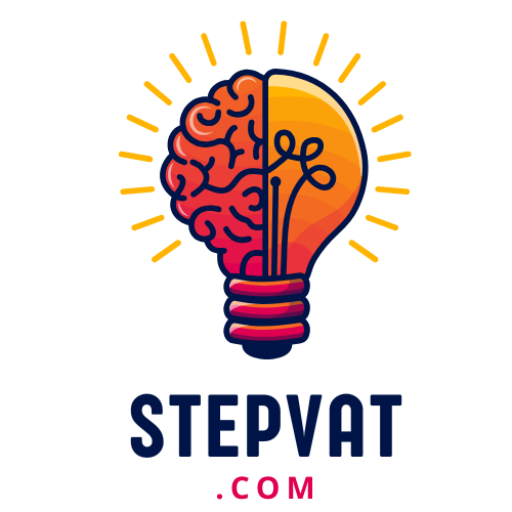Anúncios
Curious how the labor market will shape your next move?
This short report gives you a friendly, data-driven look. You get a plain-language snapshot of the job market and what job postings and openings mean for your search or hiring plan.
Indeed’s posting index stayed about 10% above pre-pandemic levels while easing year-over-year. JOLTS openings also ran above Feb 2020. Unemployment hovered near 4.2%, hires and quits cooled, and SHRM found remote work stayed common.
Why this matters to you: we translate complex signals so you can act with confidence. Expect practical takeaways on pay, benefits, skills-based hiring, and how to read soft-landing scenarios.
You should adapt ideas to your situation and consult trusted professionals when choices carry financial or legal weight. This is general education, not a guarantee, but it helps you navigate the market heading 2025 with clearer steps.
Introduction: Why Job Openings trends 2025 matter for your next move
You’re facing a cooler labor market than the fast run of prior years, but strength remains today. This matters because choices may take a bit more time, yet good opportunities still exist with a clear plan.
How a cooler but resilient market shapes your options
Unemployment and layoffs stayed low as wage growth outpaced inflation through much of last year. Health care, government, and leisure drove most gains, so sectors that serve people stayed resilient.
What’s new in hiring: skills, flexibility, and AI
Many companies shifted toward skills-based hiring and hybrid schedules. AI tools are taking on routine tasks so recruiters and managers can focus on better candidate conversations and experience.
How to use this report safely and smartly
Use these insights to test small changes, measure results, and adjust your plan with clear goals. When money, contracts, or compliance are involved, talk with a qualified professional who knows your situation — this is educational guidance, not legal or tax advice.
Where U.S. job openings stand today and where they could head in 2025
The pace of hiring has shifted from fast to steady. Postings and official openings cooled from recent peaks but remain above pre‑pandemic baselines. That means the market is less frantic, yet still active.
Postings vs. openings: what the gauges say
Indeed’s index ran about 10% above pre‑pandemic levels in late November while easing year‑over‑year. JOLTS openings were roughly 11% above Feb 2020 by late October. Read these together: one shows recruiter demand; the other records employer listings.
Sector snapshot and signals to watch
Health care, government, and leisure & hospitality drove most gains last year, though momentum softened. Watch the hires and quits rates—hires hovered near 3.3–3.5% and quits fell below 2%—these act like a speedometer for hiring velocity.
Practical guidance
- Track postings by occupation monthly to spot timing changes for high-demand roles.
- If quits stay low, expect longer search cycles; widen targets across sectors.
- Focus on consistent signals (postings, hires, unemployment) rather than one headline.
Tip: small shifts in these measures often matter more than single monthly moves.
Job Openings trends 2025: what the data says about demand, timing, and pace
Recent figures suggest demand has settled into a calmer phase across many sectors. Expect steadier rhythms instead of fast surges, with local differences shaping timing.
Stabilization or slowdown: soft-landing dynamics and payroll growth
What to expect: 2024 postings stabilized about 10% above baseline while payrolls grew roughly 180,000 per month. That pace still outstrips population growth needs, so hiring holds rather than collapses.
Regions and roles to monitor
Low-wage and in-person roles keep showing competition. Knowledge work postings trail pre-pandemic levels in several categories, which can stretch time-to-fill.
- If a soft landing holds, hiring will stabilize; job postings may inch up or stay flat by region.
- Time-to-fill will vary: in-person hires move faster; knowledge roles often take longer than during peak years.
- Use local data and hires, quits, and postings momentum to time your moves and keep balance in plans.
Tip: sequence hiring to revenue clarity, prioritize must-have roles, and lean on internal skill shifts where external pipelines are thinner.
Hybrid and remote work: flexibility remains a hiring advantage
Flexibility in where and when work happens has become a clear advantage for employers and candidates alike. You can use hybrid and remote options to attract talent while keeping teams productive.
Executives’ plans and fully remote roles
Data show executives plan to allow some remote work and many listings in 2024 included fully remote roles. That matters: offering options signals modern policies and widens your reach.
Retention and reach: balancing breadth with engagement
Remote hiring lets you tap broader talent pools without sacrificing culture. Still, clear rituals keep engagement high: schedule anchor days, publish office expectations upfront, and set time-zone boundaries.
- Reach: open job postings to wider geographies while keeping hybrid rituals to maintain connection.
- Clarity: list onsite, hybrid, or remote in every role to reduce mismatches.
- Design: define which tasks need co-location and which can be async; use anchor days for teamwork.
- Assessment: use remote-friendly tests and structured interviews to level the field.
Measure engagement and outcomes quarterly so you can refine cadence and budgets for facilities, stipends, and travel.
With clear expectations and regular measurement, you can use flexibility to boost attraction and retention across the labor market without eroding collaboration.
AI and GenAI in hiring and work: augmentation, not replacement
Generative AI is already lifting day-to-day recruiting work, and you can use it where friction slows decisions. This is about augmentation: let models handle routine tasks while people keep hiring judgment and final calls.
Productivity lift
Some employers report big time savings—Unilever says AI saved 100,000+ hours—and studies show AI-selected candidates often advance and accept at higher rates. Still, avoid promises: measure outcomes in your own context.
Recruiting workflows
You can use tools to automate screening and scheduling tasks so recruiters spend more time on structured, high-quality interviews.
- Automate resume triage and calendar orchestration to cut admin burden.
- Use matching models to surface adjacent skills and widen shortlists; verify fit manually.
- Give candidates consistent, faster responses with chatbot-driven FAQs and follow-ups.
Guardrails and responsible use
Document model use, test for bias, and keep human oversight in decisions. Transparency matters: tell candidates how technology informs outcomes and keep accountability with hiring teams.
“Share data so teams understand the power and limits of model outputs,” and keep quality-of-hire metrics to validate results.
Skills-based hiring becomes mainstream
Hiring decisions are shifting from credentials toward demonstrable abilities, and that changes how you recruit. A skills-first approach narrows performance risk and widens access to diverse people who can do the work.

Predictive power of skills over degrees: what leading companies are doing
Evidence matters: McKinsey finds skills-based screening is roughly 5x more predictive than education and 2x versus experience. Employers like Google and IBM now use assessments and apprenticeships to tap reliable pipelines.
Faster time-to-hire and broader talent pools: practical steps you can take
Start by removing degree requirements that aren’t essential. Calibrate postings to outcomes and required competencies rather than generic credentials.
- Use structured work samples and standardized rubrics to evaluate capability.
- Pilot skills stages in one function for six months, then expand.
- Measure quality of hire, ramp time, and retention across years.
- Communicate requirements and next steps clearly to build trust and reduce drop-off.
Result: companies reduce time-to-hire and improve retention when they focus on real skills—TestGorilla reports many firms cut hiring time dramatically.
Compensation, wage growth, and pay transparency
Wage growth in 2024 settled into a steadier groove, letting many workers see modest gains in real pay. That shift matters for your costs, retention, and how you design offers.
Wage growth vs. inflation: balancing real income gains with employer costs
Watch the wage growth rate relative to inflation to judge real buying power and retention risk.
If posted pay rises slower than prices, you may face turnover. If pay outpaces sustainable revenue, costs can strain budgets.
Tip: consider variable pay tied to clear outcomes in a cooler year so you can reward performance without locking fixed costs.
Why transparency and clear ranges influence retention and satisfaction
Many companies now share ranges and total rewards early to speed up hiring and reduce renegotiations.
- Post pay ranges and key benefits to cut mismatches and improve candidate trust.
- Standardize offers by role level to promote equity, with limited flexibility for experience.
- Review ranges at least once a year and align them to local market conditions.
Transparent policies reduce misunderstandings and help you make fair, defendable decisions.
Keep compliance in mind: check local rules and consult counsel on disclosures. Use clear ranges and standardized offers to protect equity and speed hiring while staying within your budget and legal guardrails.
Benefits, wellness, and flexibility: competing for talent beyond pay
Employers increasingly sell whole-person support as a core part of offers, not a nice-to-have. You can use benefits to make your offer more compelling without raising base pay dramatically.
Start by asking which supports your people value most. Mental health care, retirement advice, and tuition help top many lists this year.
What’s rising and how to prioritize
About 72% of employers plan to expand mental health offerings, so add accessible options like EAPs and digital therapy tools first.
SECURE 2.0 lets companies match retirement contributions tied to student-loan payments. That combines debt relief with long-term savings.
- Whole-person focus: mix traditional healthcare and dental with mental health and financial coaching.
- Pilot and scale: test high-impact perks with a subset of the workforce and measure uptake.
- Flexible tiers: offer choices so different groups pick what fits their life.
- Small-team tip: partner vendors can deliver broad coverage affordably.
- Operational clarity: state eligibility, waiting periods, and how benefits align with postings and onboarding.
Review utilization quarterly to keep programs aligned with real needs and to adjust funding over time.
Early-career outlook: entry-level hiring in a cooler market
Recent grads face a tougher entry landscape, yet practical strategies can speed momentum. The unemployment rate for new graduates rose to 5.3%, the highest in three years. Entry-level hiring cooled more than other groups last year.
Recent grads’ unemployment trends and practical pathways to break in
Be realistic and proactive. Use alumni networks and referrals. Many workers still land a first role through personal contacts.
- Target job openings with clear junior pathways and training.
- Leverage internships and alumni referrals to get faster interviews.
- Build short work samples and projects to show capability when experience is light.
- Apply broadly but tailor each application to match core outcomes and postings.
- Consider apprenticeships, contract-to-hire, or rotational programs as on-ramps.
Practice structured interviews and show evidence of quick learning and teamwork.
Calibrate salary and timeline expectations for the year. Set weekly outreach goals to keep momentum. These steps help job seekers convert activity into offers in a cooler labor market.
Labor supply, immigration, and demographics: the workforce constraint
Slower labor force growth and higher prime-age participation create a tighter hiring picture you should plan for.
The labor force grew about 76,000 per month in 2024, down from roughly 284,000 in 2023. Prime-age participation climbed to ~83.9%, while overall participation stayed near 62.5%.
What that means: stronger participation among core-age adults helps, but total supply has slowed. Foreign-born workers drove much of the recent gains, and policy shifts could reduce that support in future years.
Use local workforce data when choosing sites and channels. That helps you match recruiting to real local conditions, not just national headlines.
- You may face tighter labor conditions as an aging population limits supply of available people.
- Even with solid prime-age participation, slower growth in 2024 affects hiring timelines and capacity.
- Companies should forecast needs earlier and invest in upskilling, automation, and internal mobility to do more with fewer hires.
Plan multi-year strategies—training, flexible pathways for returners, and realistic ramp times cushion shortfalls and align hiring with long-term demographics and policies.
Data-driven recruiting and mobile-first candidate experiences
Measure what matters: the right numbers turn gut checks into repeatable hiring wins. Use simple metrics so you can compare channels and make faster choices.
From gut feel to metrics: quality, bias reduction, and bigger pipelines
Track quality of hire, pass-through rates, and source effectiveness. Data-driven methods improve quality of hire for 78% of HR pros and reduce bias for 69%.
Use structured interviews and work samples as tools to cut bias and lift prediction accuracy. Have employees score candidates with the same rubric so ratings stay fair.
Mobile, chatbots, and candidate-first journeys
Meet job seekers where they apply: Appcast finds 67% complete applications on mobile. Allegis reports 58% are comfortable with chatbots, which can boost completion toward ~40%.
- Optimize mobile flows to reduce drop-off and speed completion.
- Let chatbots handle repetitive tasks and FAQs so recruiters focus on conversations.
- Keep postings concise, scannable, and clear about must-haves vs nice-to-haves.
“Track stage-by-stage conversion and time-in-stage to find bottlenecks,” and share outcomes with companies so investments tie back to hiring speed and quality.
Risks, scenarios, and signals to track as 2025 unfolds
As the year unfolds, signal clarity matters more than loud headlines; focus on sustained patterns you can act on.
Look for coordinated moves across measures rather than single-month swings. That helps you avoid overreacting and keeps decisions grounded in durable evidence.
What could derail a soft landing—and what resilience looks like
Warning signs: a sustained drop in job postings below pre-pandemic baselines, falling hires and quits together, or a rising unemployment rate paired with weak wage growth.
Also watch low-wage and in-person segments closely; sharp cooling there often spreads to other parts of the labor market.
- Track job postings and hires across regions to spot early weakness.
- Monitor the unemployment rate and quits side-by-side for clearer signals.
- Employers can protect balance by pacing offers and shielding mission‑critical roles.
- Use remote work and hybrid agility to keep teams productive while you adjust.
- Time your moves to multi-month patterns—don’t pivot on one data point.
Practical guide: build contingency plans for sourcing, compensation, and internal mobility so you keep options open if conditions shift.
Resilience looks like steady GDP, stable consumer spending, low large-scale layoffs, and posted wage growth that stays sustainable. When those align, you get breathing room to plan and focus on skills and retention rather than emergency hiring.
Conclusion
,Takeaway: the market has calmed but remains active, so plan deliberately and move with purpose.
This report highlights a cooler yet resilient labor market after 2024, with postings above pre-pandemic levels, low large-scale layoffs, and modest unemployment.
Expect steady rather than explosive momentum in job openings, and plan buffers into timelines. Keep your focus on roles tied to durable demand and nurture longer bets through upskilling.
Use transparent ranges, clear criteria, and simple processes to help job seekers engage and accept offers. Employers can compete for talent with practical benefits, flexible work, and skills-first pathways.
Revisit your plan quarterly as market data evolves. When decisions involve money, contracts, or compliance, consult an accountant, financial advisor, or lawyer who knows your situation.
Treat this as education, not a guarantee — adapt these insights to your goals and act with confidence today.



